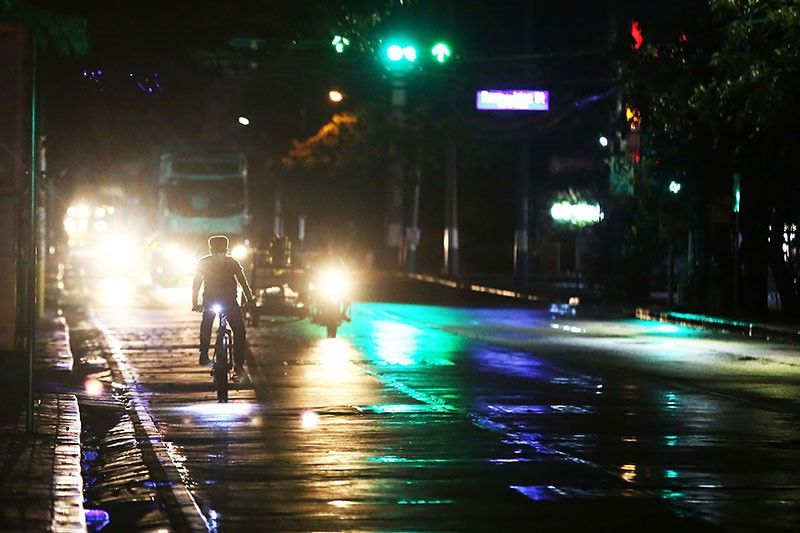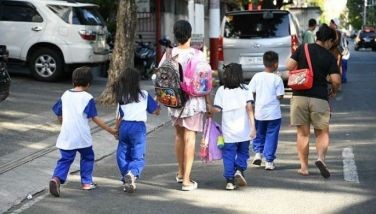Metro Manila tourism stakeholders hope for MGCQ next month

MANILA, Philippines — Tourism stakeholders in Metro Manila pin their hopes on a shift to modified general community quarantine (MGCQ) by next month to stimulate travel during the summer season.
Guiller Asido, administrator at the Intramuros Administration (IA), said the agency would open up all of the Walled City’s tourist attractions by the end of March.
Asido, however, explained that reopening all Intramuros sites could only do so much under GCQ, as the setup prohibits tour operators from offering their services to guests.
“Under GCQ, tourism services are not yet allowed. The tour guides, for instance, are disallowed to undertake their activities. Also, events may not yet return soon,” he told The STAR.
In GCQ areas like Metro Manila, travel agencies, tour operators, reservation services and related activities are authorized to do business up to 75 percent of their capacity. Tourist destinations are also barred to reopen and live events are prohibited as part of state efforts to minimize physical contact.
Asido said Intramuros has seen an increase in guest arrivals since the administration reopened Fort Santiago, Casa Manila Museum and Baluarte de San Diego last month.
In Fort Santiago’s first two weeks of activity, it welcomed an average of 500 visitors per day on weekdays, and 1,000 guests per day on weekends, according to the IA administrator. At present, Fort Santiago is allowed to receive 100 individuals at a time, while Casa Manila Museum and Baluarte de San Diego are restricted to just 50 people.
Moving forward, Asido said his agency is assessing the recommendation to double the capacity of the attractions, but added that he might reject this proposal to secure the safety and security of the Intramuros visitors.
“There are recommendations that we do 200 people at a time, but we will not do it abruptly, we will do it safely. We will study this recommendation first,” he said.
On a city level, local governments also bank on a shift to MGCQ for the recovery of their respective tourism sectors, as this should encourage people to travel and, in turn, business establishments to resume operations.
Maria Concepcion Yabut, head of Makati City’s International Relations Department (IRD), said only four percent of hotels registered with the local government are accommodating leisure stays. Broken down, 79 of the Makati hotels are operating as quarantine facilities, and only three are licensed to let in vacation trips.
Yabut added that many of the hotels in Makati City have found a new revenue source by serving as temporary shelters for workers employed mostly in business process outsourcing firms.
“Plenty of the significant hotels here opted to be quarantine facilities. What is worth mentioning all the more is that a number of Makati accommodation establishments, especially ones located in or near the central business district, were contracted by other prominent business types to be transient housing for their respective employees,” Yabut said in an e-mail.
Meanwhile, the Makati City leadership joins the Department of Tourism (DOT) in calling for the further reopening of the economy, particularly tourism and travel, according to the Makati IRD head.
She admitted that the closure of five-star Makati Shangri-La sent shivers down the spine of the local government, as it “showed that no one is spared by the current global pandemic.”
In January, the Shangri-La Group announced it was shutting down indefinitely its hotel in Makati, but looks to reopen the property when economic conditions improve.
“The city of Makati is at one with the DOT in advocating for the opening of the economy further, in particular, tourism-related enterprises, such as hotels,” Yabut said.
In spite of the local government’s eagerness to reopen the city to full capacity, she vowed that the locality would comply with movement regulations enforced by the national leadership. She argued that it is to the best interest of all sectors that the government, from top to bottom, collaborate on the policies of reopening the economy.
Tourism is one of the most severed sectors amid the COVID-19 pandemic, as mobility restrictions prevented individuals from traveling both domestic and abroad.
Last year, visitor arrivals in the Philippines fell by more than 82 percent to 1.48 million, from 8.26 million in 2019.
- Latest
- Trending




























